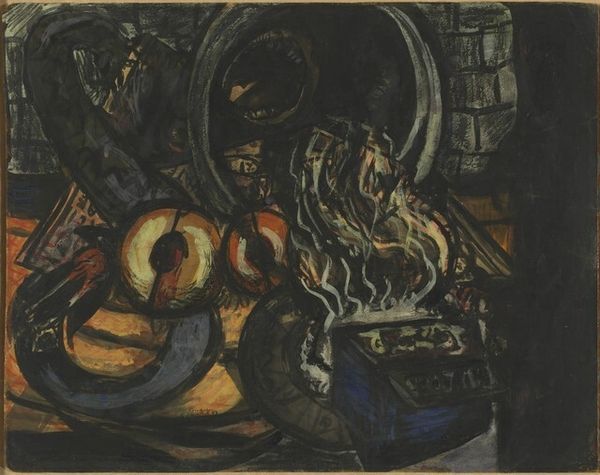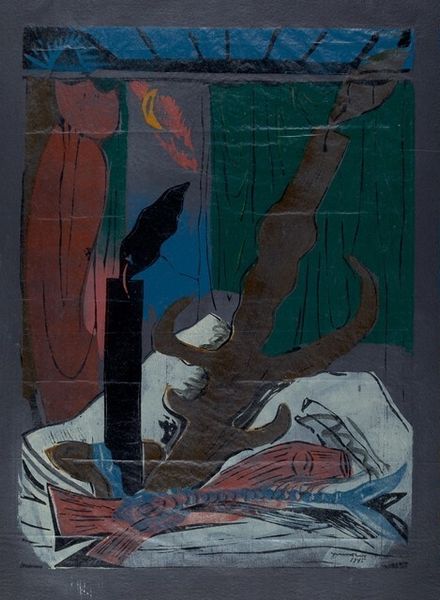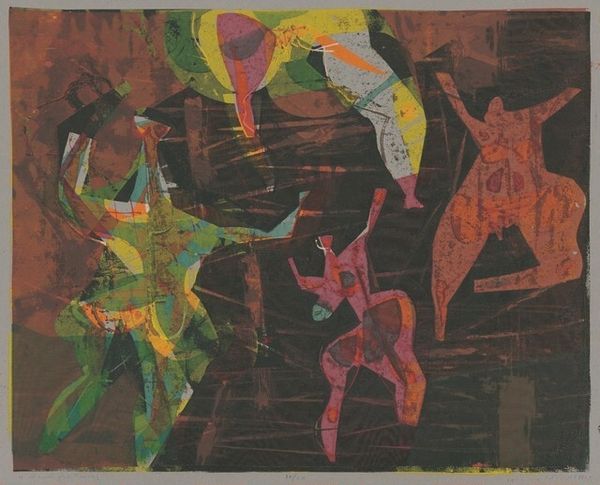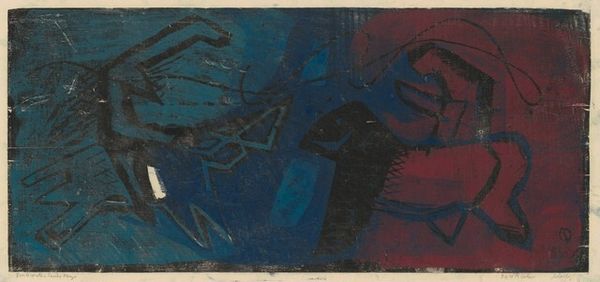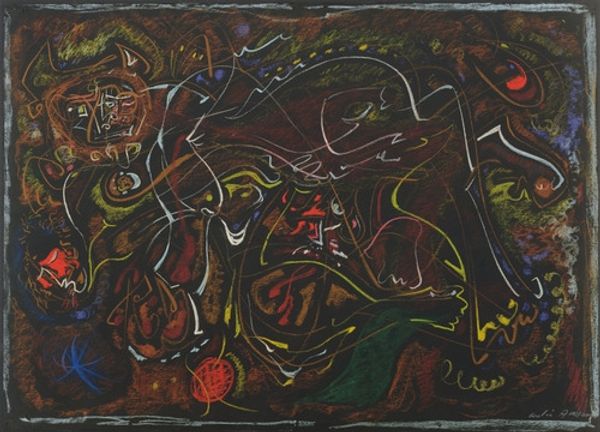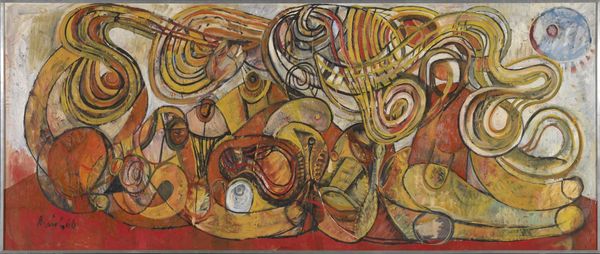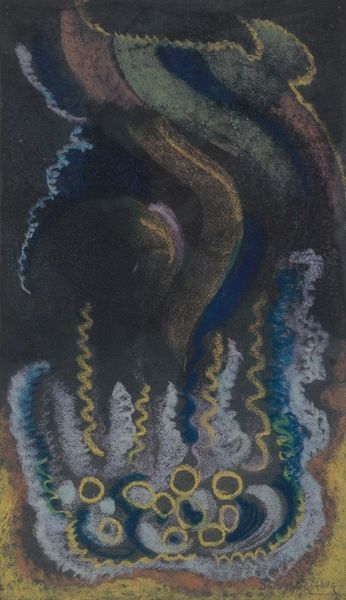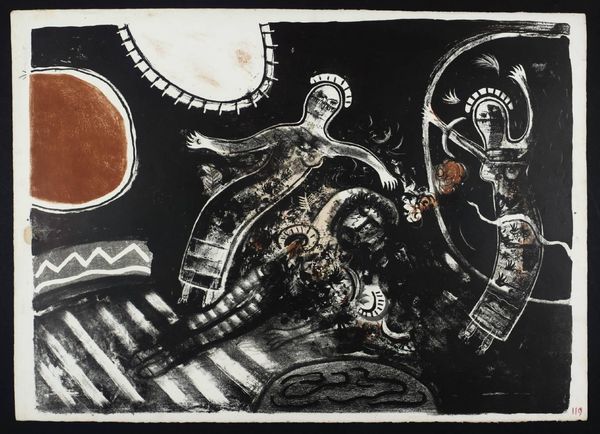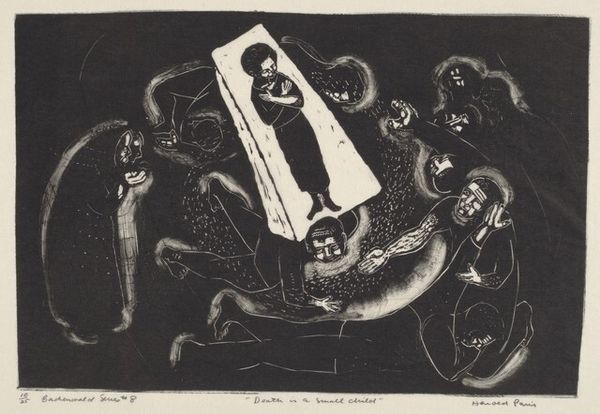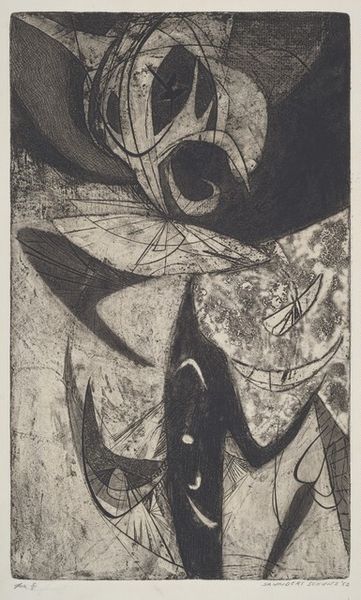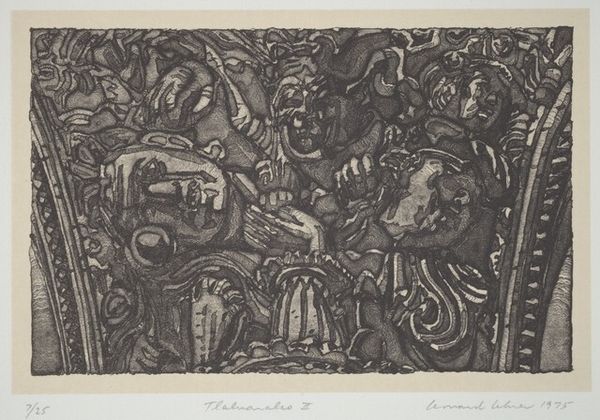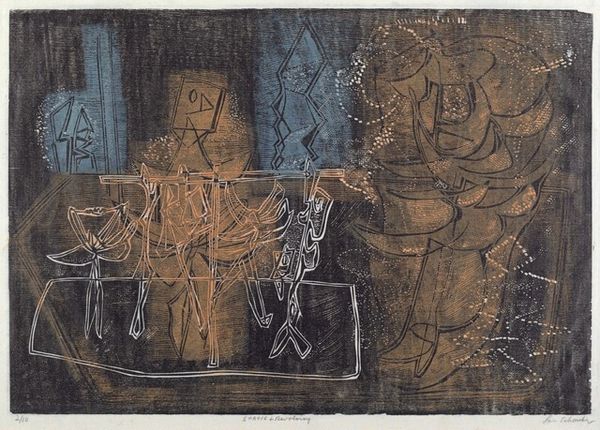
etching, ink, engraving
#
gouache
#
etching
#
landscape
#
figuration
#
ink
#
engraving
Copyright: National Gallery of Art: CC0 1.0
Editor: This is Harold Persico Paris's "In the Garden," dating from around 1950. It’s an etching and engraving in ink and gouache, creating an unexpectedly somber, even surreal, mood. How do you read its composition? Curator: Formally, it presents a fascinating study in contrasts. Observe the tension between the dense, almost claustrophobic darkness of the background and the swirling, organic forms pushing to emerge. The texture, achieved through etching and engraving, adds another layer of complexity. Note how line and form articulate a tension between chaos and order, the composition seemingly contained within the defined borders of the piece. Editor: That’s interesting. The limited palette really emphasizes those textures. What do you make of the figurative elements—are they deliberately distorted? Curator: Indeed. Distorted, elongated forms generate a kind of visual discord. Do you notice the effect of light and shadow in defining the sculptural quality of those figures? The artist manipulates our understanding of depth and volume to create ambiguity, prompting us to question our assumptions about form itself. What sort of mood do the textures create for you? Editor: I find them unsettling but compelling, maybe even inviting. The contrast you mentioned does create a sense of depth I did not immediately see. Curator: Precisely! And it is this inherent visual dichotomy – an intentional imbalance, if you will – that creates much of the piece's expressive potential, demanding that the viewer actively participate in the work’s realization. What does the "garden" reference to you? Editor: This feels like less of a garden, and more like the idea of one – full of mystery. I appreciate your insight. I’m more attentive now to how Paris played with dimension through shadow and light, manipulating familiar shapes. Curator: Art invites new perspectives, offering fresh and unique vantage points. Through engaging with its technical language, we further learn of ourselves and our interpretations of reality.
Comments
No comments
Be the first to comment and join the conversation on the ultimate creative platform.
